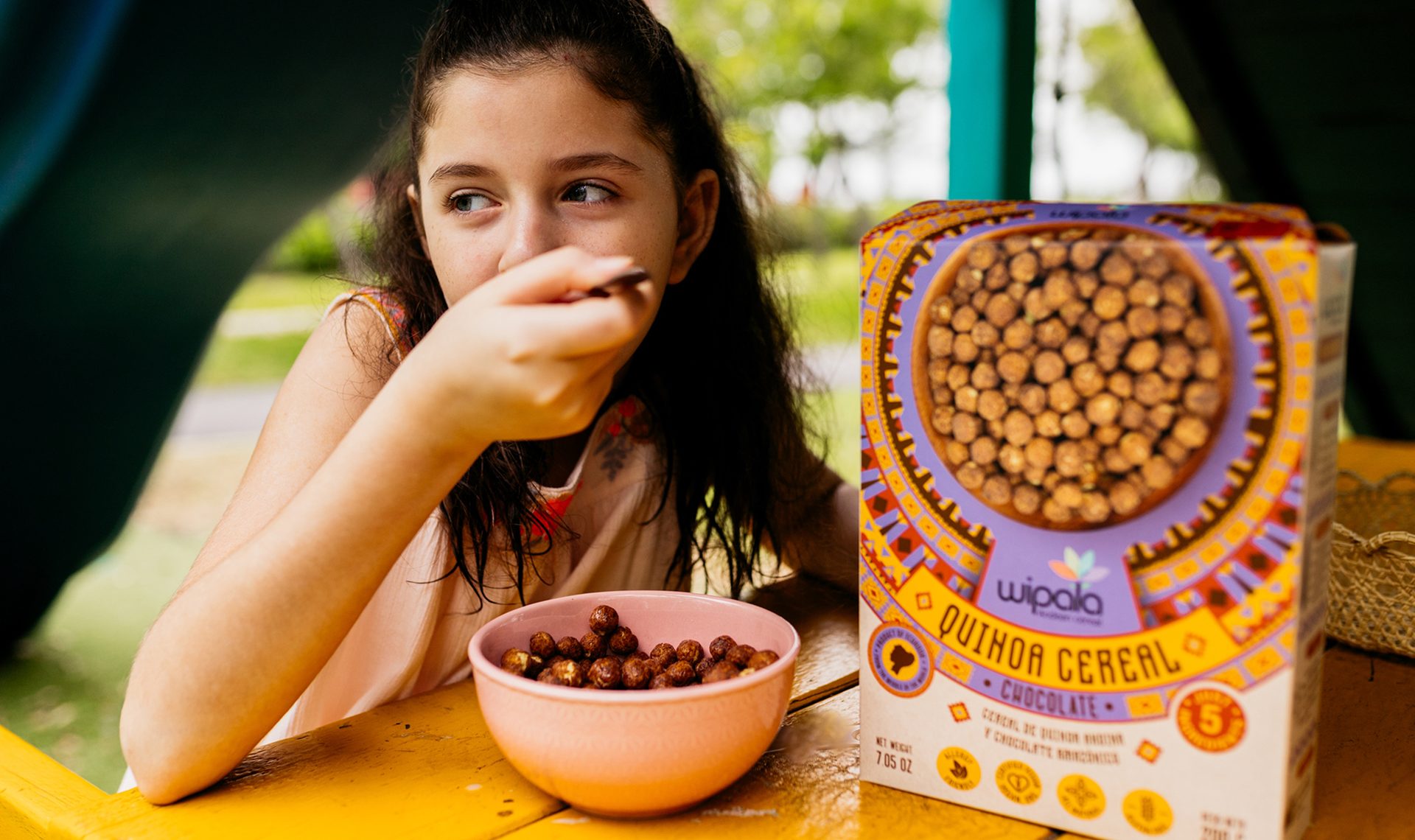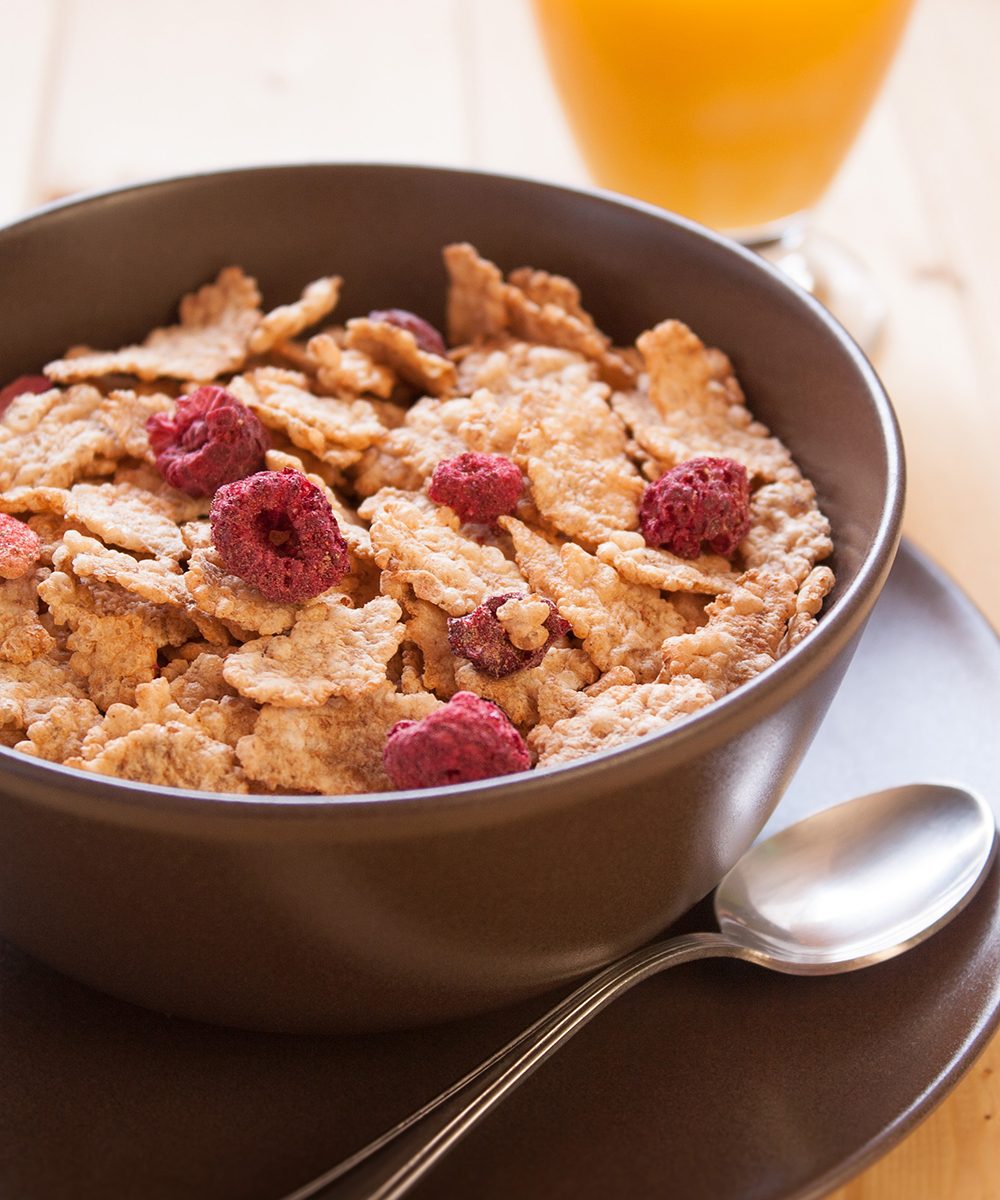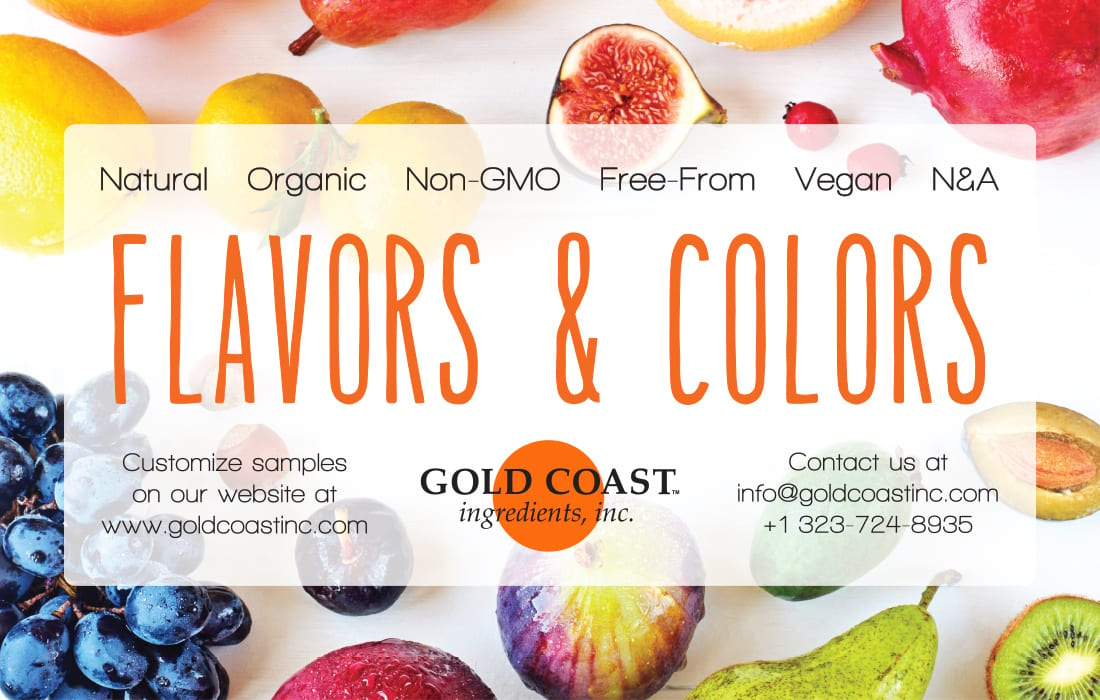Sugar Reduction / Kids’ Cereals
Technologies
Sweetened cereals still play a prominent role at breakfast for American schoolkids—but lowering sugar in them is a must.
Better
by the Bowl
Kids’ unwavering love for sweetness makes reducing added sucrose a tall order for all product developers, but especially for those developers creating pre-sweetened cereals. Reformulation, however, is successful only if it is safe and affordable without sacrificing sensory acceptability by the highly demanding target audience.
Sugars—predominantly monosaccharides and disaccharides—contribute to flavor, texture, and stability in breakfast cereals. They also suppress the bitterness and astringency of grains and enhance the overall sensory profile by developing color and aroma during the manufacturing process. Sugar also improves texture by augmenting crispiness or crunchiness, and helps extend shelf life by reducing water activity and inhibiting microbial growth. This is why simply reducing or removing sugar has not proven successful.
Health and safety are the primary reasons consumers give for wanting less added sugar in their children’s cereals. Video courtesy of: Getty Images / viafilms
By Kantha Shelke, PhD, Contributing Technical Editor

Dried fruits and dried fruit powders add beneficial phytonutrients and flavor, as well as sweetness to cereal products in a kid-friendly way. Photo courtesy of: The Quaker Oats Co.
Bulking sweeteners, such as sugar alcohols and the newer, rare sugars allulose and tagatose, can require usage levels that are not commercially viable. Plus, parents might be hesitant to purchase cereals with these sucrose substitutes because of a lack of familiarity. Meanwhile, high-intensity sweeteners lack the multifaceted functionality and taste of sucrose and fructose and are not suitable for children, whose sweet tooth could use subduing towards lower levels of sweetness in foods.
A disadvantage of common sugar—sucrose from sugarcane and beets—is that refining strips naturally occurring bioactive and beneficial compounds. These include phytochemicals such as flavonoid glycosides and phenolic acids, along with minerals and fiber. Those important compounds do remain in the non-centrifugal sugars, such as brown sugar and molasses, making them valuable sugar alternatives. Their greater depth of flavor also makes slight sugar reduction possible by simply using a little less in formulation.

The growing demand for products that are good both for people and the planet increased the focus on lowering sugar more naturally than just using alternatives. Photo courtesy of Wipala & Co.
Allulose, a form of sugar that is an epi-isomer of fructose, has a clean, sweet flavor somewhere between crystalline fructose and sucrose. It is able to replace those sugars on a one-to-one basis in formulations while cutting calories from those sugars by 80-90%.
Although allulose is billed as having around three-quarters the sweetness of sucrose, the difference is not readily noticeable in formulations containing fruits, vanilla, and chocolate, the flavors of which can be enhanced by allulose. It is more hygroscopic than sucrose, however, and thus presents a challenge for glazed cereals but it would do well in heat-and-eat cereal products.
The Sound of Sweetness
For children, the true flavor of a breakfast cereal encompasses its appearance, aroma, consistency, texture and other characteristics, such as lightness in handling. Sound—i.e., the crunch—is another sensation that can impact flavor. Research conducted by Charles Spence, PhD, at Oxford University in England, demonstrated that higher frequency sounds can actually enhance the perception of sweetness in foods. The research also showed that lower frequency sounds can enhance notes of bitterness in foods. Simply adjusting the crispy crunchy textures of a cereal could thus boost its perceived sweetness and allow for the reduction of some of the added sugar, providing both a health advantage for consumers and a cost savings for product makers.

Date powder is fast becoming a favored sweetener to use in cereals due to its healthful qualities and deep, fruity flavor notes. Photo courtesy of: Nature's Path Foods, Inc.
A Little Less
Nature offers a wide variety of options to transcend refined sugars by matching their temporal dynamics—specifically, sweetness onset time, time to hit maximum sweetness, and time of sweetness decay. These options allow a rise in health benefits with a gradual reduction in total sugar.
Jaggery (also known as panela or piloncillo), honey, dates, maple syrup, sorghum syrup, agave, and molasses have been used for millennia in foods and are ideal for breakfast cereals. Consumed since ancient times in various parts of the world, jaggery is the cooked sap of sugarcane, date palm, palmyra palm, sago palm, and coconut palm to form an amber-to-brown syrup. It is available as either an amorphous solid or a crystalline powder.
While refined sucrose and fructose are mostly 99% pure, jaggery consists of about 87% sucrose and 10% fructose and glucose. It also contains a full panel of minerals (calcium, magnesium, phosphorous, iron, manganese, zinc, selenium, and chromium) and vitamins A; vitamins B1,B2,B3,B5,B6,B9, and B12; vitamin C, vitamin D2, and vitamin E. In addition, jaggery retains slight amounts of fiber (1%) and protein (1%), plus antimicrobial, cytoprotective, and antioxidant phytochemicals, including phenols, flavonoids, tannins, alkaloids, terpenoids, glycosides, and compounds that contribute to a rich flavor profile along with the functional benefits.

Barley malt extract and molasses balance the toasted grain flavor notes perfectly while reducing total sugars, and are a consumer-friendly, clean-label choice. Photo courtesy of: Weetabix, Ltd./Barbara’s Bakery
Up and Comers
Both liquid and powdered carob sweeteners already are in a number of beverage and pastry products, and they should easily segue to cereals in the next few years. Sweet potato syrup and dried sweet potatoes offer another clean-label replacement for added sugar. In addition to sweetness, flavor, color, and fiber, these can also add a vegetable serving to the final product.
Flavorful botanicals such as yacón, aronia berry, lucuma, amazake, and candy cap mushrooms (Lactarius rubidus and Lactarius rufulus) are either emerging or already in the pipeline as feasible sweetener sources. Each can bring variety, flavor, and health advantages, especially for cereal products that will satisfy consumers seeking new, naturallysweetened cereals and other products.
Yacón (Smallanthus sonchifolius) is a tuber native to Central America but now grown worldwide. It has been gaining interest as a powerful source of digestive health-supporting fructo-oligosaccharide fermentable fibers (40–50% by weight). Yacón syrup, with a notified GRAS status in the US, has the physical and sensory characteristics of honey and agave syrup. Dried yacón syrup can be used as a cost-effective dusting sweetener for dry cereals.
Lucuma is an intensely sweet tropical South American fruit. It has been making inroads in the US as a novel, natural sweetener source. Lucuma has a firm, orange-yellow pumpkin-like pulp, and is rich in beta-carotene and niacin with a flavor reminiscent of maple syrup. Freeze-dried lucuma—with intact flavor, color, and nutrients—can be a convenient addition to dried cereals.

Plant-based stevia and monkfruit can support bulk sweeteners such as erythritol in cereal products as another way to reduce sucrose and fructose in RTE breakfast items. Photo courtesy of Back to Nature Foods Company, LLC
Jaggery may replace up to 85% of the added sugar and yet still can yield a net 5-7% reduction in added sugar without negatively affecting physiosensory and storage characteristics of cold cereals such as granola and extruded whole-grain cereals. Wipala & Co. produces Wipala Puffed Quinoa Cereal with rice, quinoa, panela, and cinnamon, at a total 4g total sugar (which is also added sugar) per serving. Notice that this formulation also leverages toasted rice and quinoa for their Maillard notes, along with cinnamon to boost its sensory profile.
Coconut sugar, also known as coconut palm sugar, has seen a recent jump in popularity. It is made from the sap of coconut trees and resembles raw sugar in appearance, flavor, and functionality. Although more expensive than sugar, coconut sugar has vitamins C and E, minerals zinc, iron, potassium, and phosphorus, and phytonutrients including antioxidants, flavonoids, anthocyanidins, and polyphenols. It also has natural inulin, a functional fiber that imparts a slight sweetness as well. Its long history of safe use and growing consumer appeal make it a veritable beacon for children’s cereals.
Liquid Assets
Honey is a naturally complex syrup containing multiple sugar types, organic and amino acids, flavor compounds, and several bioactive compounds (including phenols and flavonoids). Honey averages between 3-4kcals/g yet is 25% sweeter than sugar, and contributes its unique flavor profile. Spray dried honey used sparingly as a thin coating on extruded or toasted cereals can partially replace added sugar and lower the total amount of sugar.

Allulose—just 0.2-0.4 kcals/g—is often used with other sweeteners, but can act as a 1:1 drop-in for sucrose in some formulations due to its sucrose-like flavor and functionality. Photo courtesy of: Magic Spoon, Inc.
Dry RTE cereal companies have used honey to partially replace sugar for decades. For example, General Mills, Inc.’s Honey Nut Cheerios cereal replaces part of the sugar in the whole-grain oat cereal made for K-12 schools. The cereal contains 9g of added sugar per serving.
Like honey, maple syrup is a complex sweetener that varies according to its “terroir.” It is commonly categorized into four types: golden, amber, dark, and very dark, respectively richer in flavor and color. While calorically similar to refined sugar, maple syrup offers a range of vanilla to caramel-type notes that add a singular flavor profile and richness that also may allow for a reduction of total sugars compared to sucrose or fructose. However, using it in a formulation requires attention to ensure batch-to-batch consistency in color and flavor.
Sorghum syrup and agave syrup are two popular natural sweeteners readily applicable to RTE and heat-and-eat cereal products. Sorghum syrup can be light or dark, ranging from a honey-like composition to one closer to molasses or dark corn syrup. It also contains biologically active constituents and microelements similar to other similar sweeteners. Sorghum syrup can effectively replace 10 to 100% of the added sugar in cereals without any off notes.

Lowering sugar in today’s breakfast products comes via using a combination of naturally sweet ingredients, such as honey, fruit, sweet spices, and toasted ancient grains. Photo courtesy of: Cascadian Farm Organic, Inc.
Agave syrup, also known as maguey syrup, is extracted from several species of agave (typically Agave tequilana or Agave salmiana). It low glycemic profile and its inulin content support healthful gut bacteria and digestion. Agave also ranges from about 60-90% fructose, so can be up to around one-and-a-third times as sweet as sucrose, allowing for lower usage and a reduction in total sugar.
Molasses offers a rich caramel flavor that is useful in masking undesired flavors of whole grain cereals and its colligative properties are useful in reducing water activity and extending the shelf-life of baked products. Even light molasses has a very strong and singular flavor. Moreover, as with nearly all syrup sweeteners, suppliers make them available in crystalline and powdered forms that cover a comprehensive range of colors and flavors.
Fruit-Sweet
Fruits offer several advantages as multi-faceted whole-food sweeteners. They are naturally high in fructose, so can help reduce total sugars. Their sugar content is exempt from declaration as “added sugar” on nutritional fact panels. Their intrinsic sugar, fiber, mineral, and flavor components synergistically balance and boost sweetness and sensory profiles, help lower water activity for shelf-life extension and antimicrobial effects, and help set cereals apart in saturated markets.

Sweetness gets a slight boost from the use of moderately sweet fermentable fibers, such as digestive health-supporting inulin. Photo courtesy of: Beneo, Inc. USA/GiordanoAita
Some fruits, such as apples, pears, and prunes are naturally low-glycemic, and may be added as dried bits and pieces for variety in texture and visual differentiation along with positive health and marketing claims. This makes them ideal for everything from granola-type cereals to hot cereal products. They also come in freeze dried and puff formats, now commonly included in RTE dry cereals.
Blueberries come in many forms, offer numerous health benefits, and are popular with children. Their blue/purple color offers visual appeal and reflects their high polyphenol and anthocyanin content which, along with their intrinsic fiber, wins them Heart-Check certification by the American Heart Association. Meanwhile, their citric and malic acids enhance the end-product's sweetness profile. Dried blueberries are often used as substitutes for, or companions to dried cherries, dried tart cherries, and dried cranberries in granola and hot cereal products.
Dates have served as a source of sweeteners for centuries in the Levant. Today, they are surging in popularity (as is date sugar). With their long history as an established healthy sweetener, they are available in a variety of formats ranging from whole, diced, paste, juice concentrate, syrup, and powdered (date sugar). Dates are a naturally sweet solution as whole fruit, pieces, puree or paste with about 75% sugar and 5-8% fiber, while date sugar offers the convenience of a dry coating ingredient.
Another ancient desert fruit that has seen a sudden rise in popularity as a source for natural sweeteners is carob (Ceratonia silique). One of the oldest cultivated foods known, carob also is highly sustainable and ecofriendly. With upcycled ingredients serving as a beacon to consumers, the path is clear for the upcycled zero-waste low-glycemic-index pulp of deseeded carob fruits into cereal applications. In addition to a balanced mixture of fructose (47%) and glucose (45%), carob contains soluble fibers and other polyphenols, as well as D-pinitol, a bioactive inositol that is 50% as sweet as sucrose and has demonstrated significant insulin-regulating properties.
Flavors with sweetness-modifying properties are emerging as viable solutions and as alternatives to non-nutritive sweeteners. Positive allosteric modulators—compounds that interact with sweet taste receptors, enhance their activity and thereby sweetness perception—may be used to reduce added sugar while maintaining sweetness. Applying these and other strategies in conjunction with the use of natural sweeteners to replace higher caloric sugar will allow cereal makers to completely change the cereal paradigm in short order. PF
Kantha Shelke, PhD, CFS, teaches food safety regulations at Johns Hopkins University, and is founder/principal at Corvus Blue LLC, a food science and research firm retained by mid-market enterprises to expedite development and commercialization of new food products and technologies with science and sensibility. Contact her at kantha@corvusblue.net.


